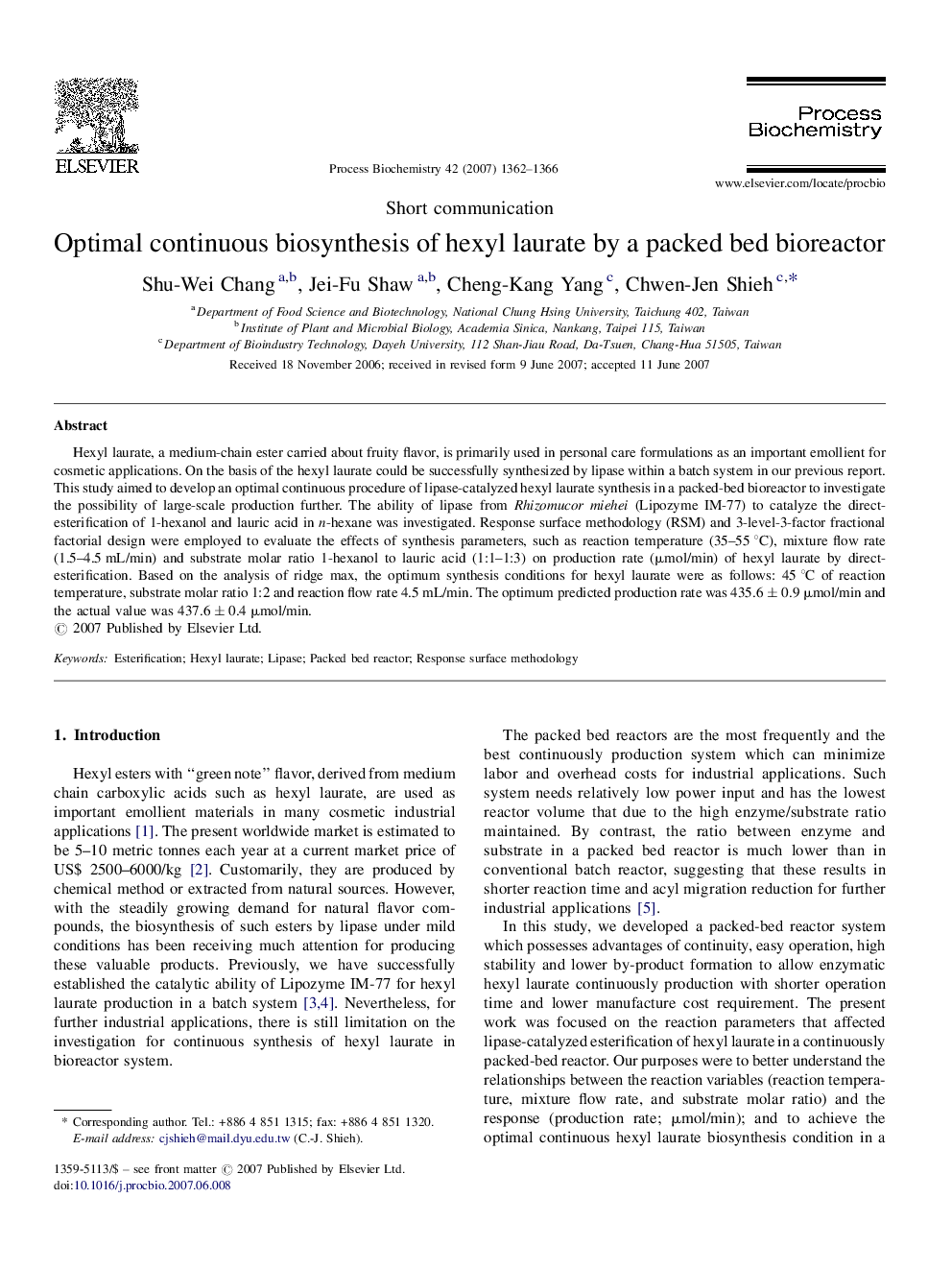| Article ID | Journal | Published Year | Pages | File Type |
|---|---|---|---|---|
| 35708 | Process Biochemistry | 2007 | 5 Pages |
Hexyl laurate, a medium-chain ester carried about fruity flavor, is primarily used in personal care formulations as an important emollient for cosmetic applications. On the basis of the hexyl laurate could be successfully synthesized by lipase within a batch system in our previous report. This study aimed to develop an optimal continuous procedure of lipase-catalyzed hexyl laurate synthesis in a packed-bed bioreactor to investigate the possibility of large-scale production further. The ability of lipase from Rhizomucor miehei (Lipozyme IM-77) to catalyze the direct-esterification of 1-hexanol and lauric acid in n-hexane was investigated. Response surface methodology (RSM) and 3-level-3-factor fractional factorial design were employed to evaluate the effects of synthesis parameters, such as reaction temperature (35–55 °C), mixture flow rate (1.5–4.5 mL/min) and substrate molar ratio 1-hexanol to lauric acid (1:1–1:3) on production rate (μmol/min) of hexyl laurate by direct-esterification. Based on the analysis of ridge max, the optimum synthesis conditions for hexyl laurate were as follows: 45 °C of reaction temperature, substrate molar ratio 1:2 and reaction flow rate 4.5 mL/min. The optimum predicted production rate was 435.6 ± 0.9 μmol/min and the actual value was 437.6 ± 0.4 μmol/min.
